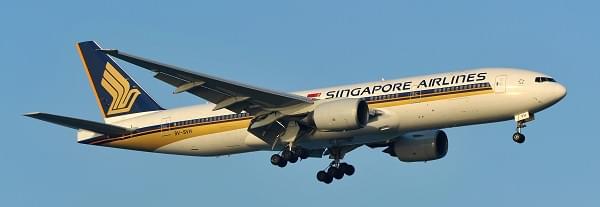
Hopefully you’ll never find yourself in a situation where you’ve allowed some of your
The best programs have a flat fee or return the miles complimentary on request. Most, however, use a sliding scale that can make it very expensive to restore large balances. Think carefully about how much you value those miles and what you might use them for before spending several hundred dollars to get them back. Finally, a few programs don’t offer any opportunity to restore lost miles. This post at least describes a few ways that their life can be extended if you act before they expire in the first place.
When Do Airline Miles Expire?
| Airline | Program Name | Expiration |
|---|---|---|
| Air Canada | Aeroplan | 12 months |
| Alaska Airlines | Mileage Plan | 24 months |
| American Airlines | AAdvantage | 24 months |
| British Airways | Executive Club | 36 months |
| Cathay Pacific | Marco Polo Club | 36 months |
| Delta Air Lines | SkyMiles | Never |
| Hawaiian Airlines | HawaiianMiles | 18 months |
| JetBlue | TrueBlue | Never |
| KLM/Air France | Flying Blue | 20 months* |
| Singapore Airlines | KrisFlyer | 36 months |
| Southwest Airlines | Rapid Rewards | 24 months |
| United Airlines | MileagePlus | 18 months |
*after last qualifying flight
American Airlines (AAdvantage)
Miles earned with American AAdvantage will expire after 24 months without any account activity in your AAdvantage account. If they expired on or after December 2002 (which applies to most people reading this post), then they are eligible for reactivation. American Airlines charges between $200 and $600 depending on how many miles you’d like to restore.
- $200 to restore 1-50,000 miles
- $400 to restore 50,001-75,000 miles
- $600 to restore more than 75,000 miles
United Airlines (MileagePlus)
Unlike American Airlines, United places a time limit on how quickly you must act to recover any lost miles. They can only be restored within 18 months after they expire. Fees are also much higher than with American Airlines if you wish to reinstate a very small number or a very
- $50 to restore 1-5,000 miles
- $200 to restore 25,001-30,000 miles
- $400 to restore 50,001-75,000 miles
- $600 to restore 100,001-125,000 miles
- $1,200 to restore 200,001-250,000 miles
- $2,500 to restore more than 500,000 miles
There are other intermediate price points not listed above, but you can view all of them by reading the complete terms and conditions. If you decide to proceed, log into the United website through this dedicated page.
Alaska Airlines (Mileage Plan)
Alaska Airlines claims that miles do not expire, although it reserves the right to close and delete an account that is inactive for 24 months. (Is there a difference? Supposedly this means that there’s a chance no immediate action will be taken.) Miles can be re-instated up to one year after they are “deleted” for a flat fee of $75.
Southwest Airlines (Rapid Rewards)
Rapid Rewards points will expire after 24 months without account activity, and there is no policy for reinstating points after they have expired. Most people report no luck in their requests to have miles returned; they are likely lost for good.
Hawaiian Airlines (HawaiianMiles)
Any earning or redemption activity in your HawaiianMiles account in the past 18 months will prevent your miles from expiring. Once miles have expired, they can be re-instated for a fee. This is not disclosed online, but multiple reports suggest the cost is roughly $30 per 1,000 miles. This would place it among the most expensive fees of any program, and it is probably not worthwhile to most people. Just buy the ticket with cash.
Air Canada (Aeroplan)
Aeroplan has one of the most strict policies, letting miles expire after just 12 months of account inactivity. In addition, there is no cap to the fees you must pay to have them restored. Expect an administrative fee of CAD$30 plus CAD$0.01 per mile. For example, restoring 50,000 miles would cost CAD$530.
British Airways (Avios)
Avios expire after 36 months of inactivity. There is no policy for reinstating Avios after they have expired, so they may be lost for good, but some people report success if the miles were lost recently. Miles that are returned may come with an additional requirement, such as new activity within the next three months, or else they’ll expire again — and for good.
Singapore Airlines (KrisFlyer)
KrisFlyer miles don’t expire all at once. Instead, individual miles expire three years after the month in which they were earned. This means that more recently earned miles will remain available for use. Keep this in mind when looking at your account balance and saving up for a large redemption.

Although expired miles will not be returned, the expiration date can be extended an additional six months (for general members) or 12 months (for elite members) at a rate of $12 for every 10,000 miles. Alternatively, you can redeem 1,200 miles instead of paying $12. These fees are levied online and increase to $20 or 2,000 miles when requesting an extension in person or by phone.
Cathay Pacific (Asia Miles)
Like with Singapore Airlines’ KrisFlyer program, individual Asia Miles are valid for 36 months after they were earned.
All members pay the same fee of $40 per 2,000 miles to extend their validity by an additional 36 months. This fee only applies online; in-person or telephone requests will cost $100 per 2,000 miles. Although both fees are high, the extension is particularly long and might make this transaction worthwhile.
KLM/Air France (Flying Blue)
Miles will not expire in Flying Blue as long as you take a qualifying flight every 20 months. Be aware that this policy excludes other forms of account activity from delaying expiration. In addition, Flying Blue does not have a policy on restoring miles after they have expired, so they may be lost permanently.





